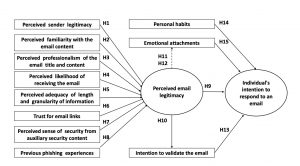Interactions Magazine – last issue of Jon Kolko and Richard Anderson
Also Don Norman reflects in his column, and raises some pointed criticism of Interactions Magazine publisher ACM, that I endorse completely:
“I recently became a columnist for Core77, an open, free Internet magazine for industrial designers, and my first post received more responses, blogging comments, and consideration than the total of the responses during my five years of columns in interactions.
It is time for ACM, a nonprofit organization dedicated to the free dissemination of knowledge, to stop hiding behind paid subscription walls and get its stuff out in the open for everyone to share. ACM – and many scientific societies – have lost track of the knowledge-sharing role of science and instead have been governed more by old-fashioned media rules than the modern world of freely accessible media.
interactions fails to impact the larger world of research outside of ACM’s CHI because of its failure to be open and accessible. At the same time, it fails to impact the academic research world because it is neither peer-reviewed nor the repository of the weighty, carefully experimental, rigorous knowledge required by promotion committees in universities. So what is interactions? Neither a serious scientific publication nor an influential popular one.”
Here are the articles that are currently available for free:
MCC’s Human Interface Laboratory – The promise and perils of long-term research
by Bill Curtis
In this column, Bill discusses his involvement with the Microelectronics and Computer Technology Corporation. This research enterprise, largely forgotten today, was highly influential in the 1980s, hiring and providing visibility to HCI researchers, many of whom remain active.
Looking back, looking forward
by Don Norman
Over the past five years, Don Norman has written approximately three dozen columns. What has been learned? What will come? Obviously, it is time for reflection.
Angst, and how to overcome it
by Gary Marsden
Does it make sense to separate developing world research from that conducted in more developed economies? At the end of the day, people are people and technology is technology, the world over. Are we doing the developing world a disservice by somehow treating it differently from the developed?
The hard work lies ahead (if you want it)
by Steve Portigal
Abraham Maslow’s “Hierarchy of Needs†from 1943 is a well-known psychological framework that has been applied (directly, or through derivative versions) to thousands of diverse problems. It’s high time to leverage this style of hierarchy to challenge the types of user experiences we’re enabling with the stuff we’re making.
Learning from John Rheinfrank: reflections on acquiring a design language
by Jon Freach
For three years in the mid-1990s, I had the fortune of learning a new language of design from John Rheinfrank, the co-founder and first co-editor of this magazine, through a user-centered baptism of sorts.
From static to adaptive
by Hugh Dubberly, Justin Rheinfrank and Shelley Evenson
When John Rheinfrank [who passed away in 2004] learned he was sick, he began working on a book on the relationship between design and systems. Sadly, he never finished, but some of his core ideas were preserved in a presentation on moving from static to adaptive worlds. John saw adaptive worlds as a new way to frame interaction design. Working from John’s presentation slides and a tape of his talk, we have summarized his ideas.
On experiences, people and technology
by Jon Kolko
In reflecting on the 200,000 words we’ve published in the past three years, I see a common theme that describes interaction design as a discipline focused on culture and behavior.




